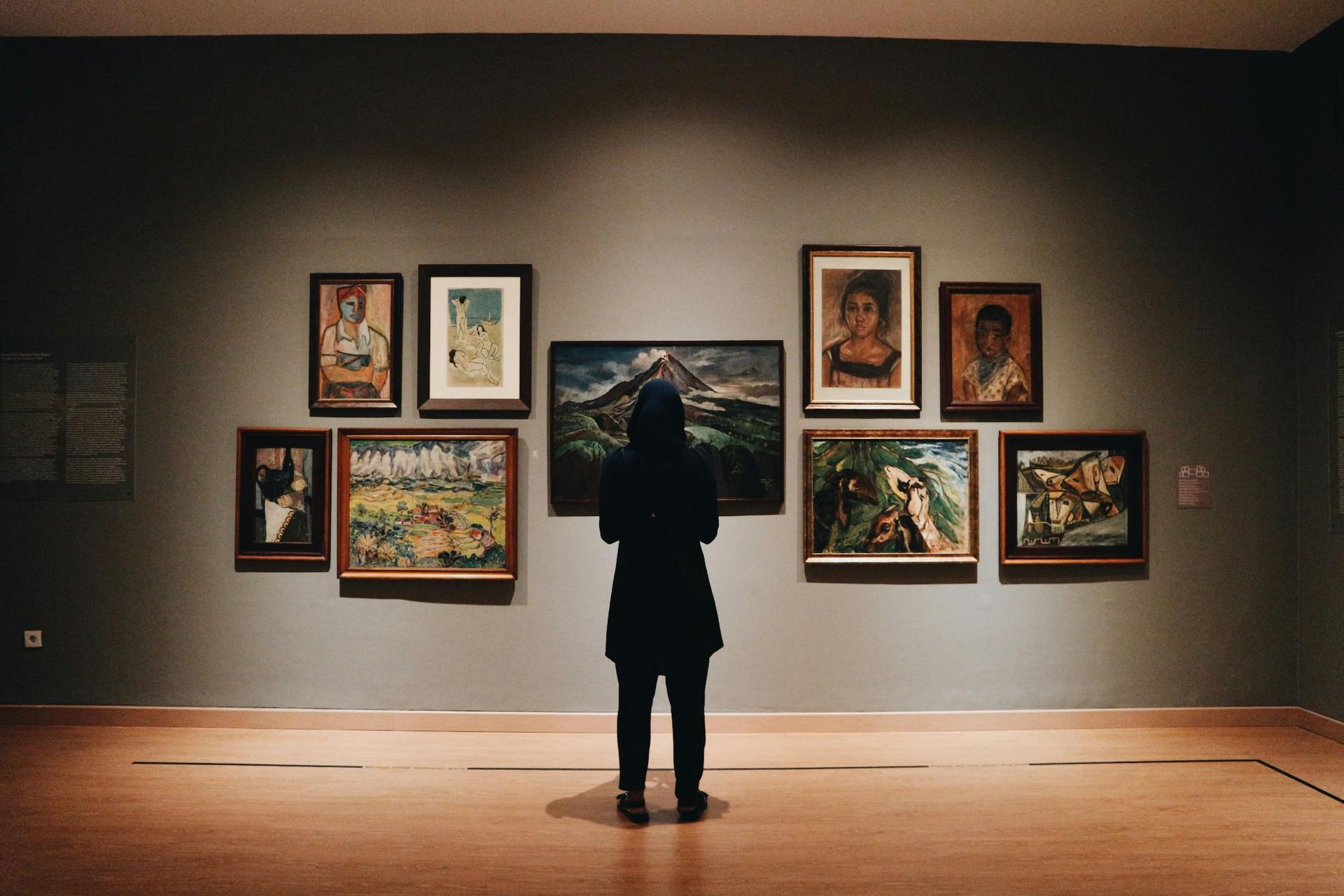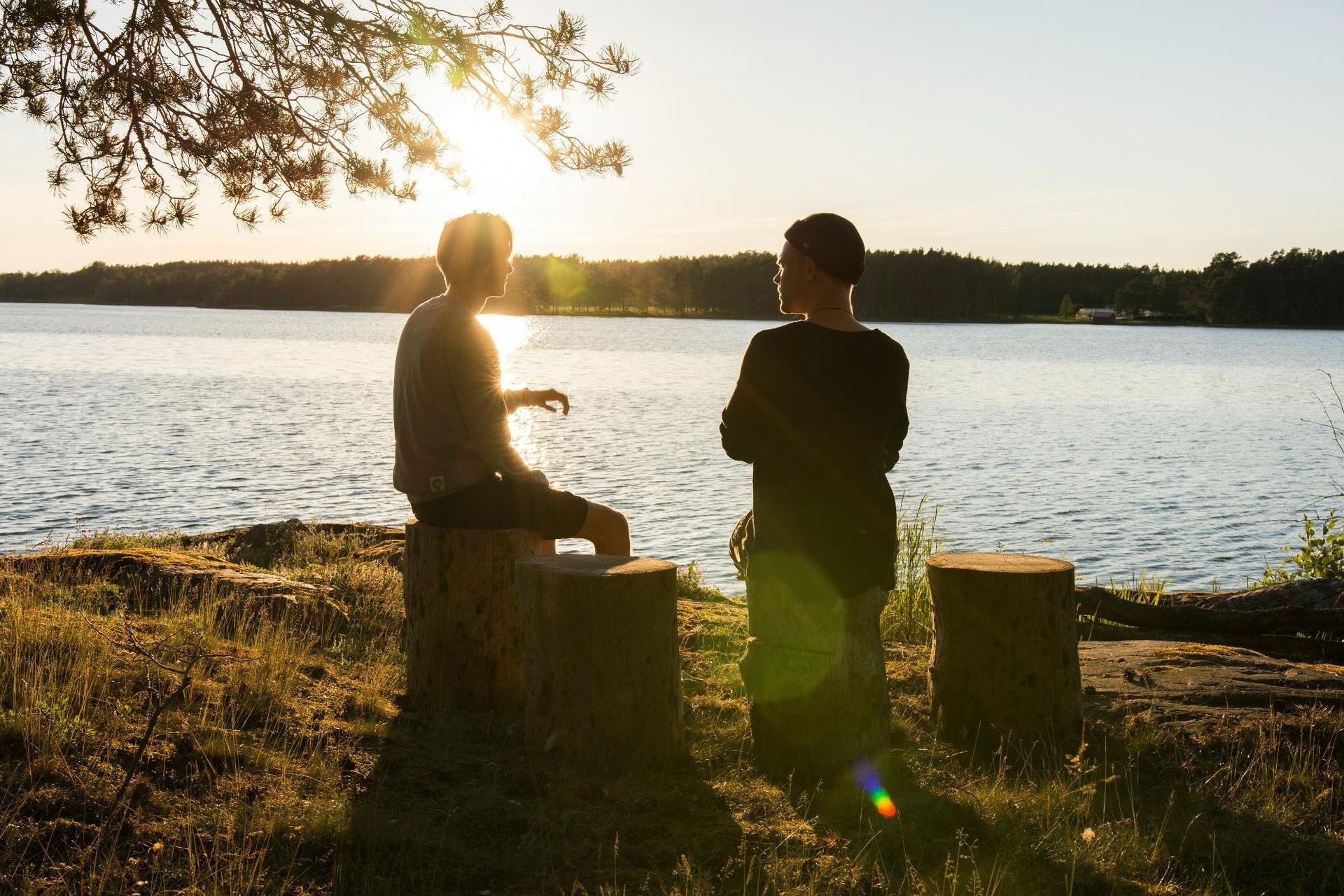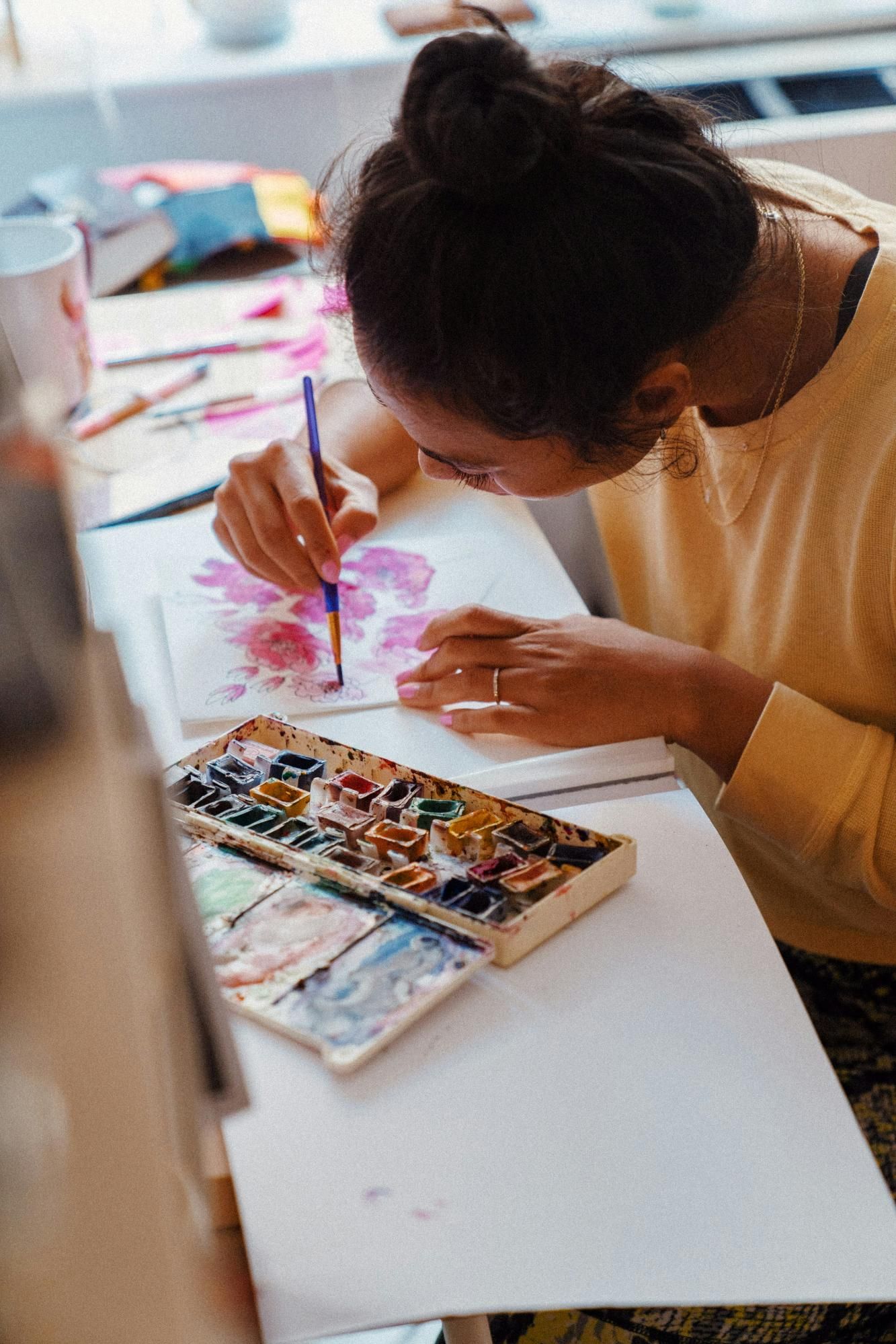Unleashing Creativity in the Digital Age
Technology has transformed the creative process, but it doesn't always meet our expectations. Studies show that engaging in various activities can stimulate different parts of the brain, boosting motivation and creativity. Research suggests that stepping away from digital tools can open new pathways for inspiration. In this article, we'll explore techniques to harness your creativity when technology doesn't cut it, drawing on both traditional methods and new approaches to spark your imagination.
KEY TAKEAWAYS
- Pen and paper offer a tactile experience that engages the mind differently from digital tools
- Nature walks provide fresh inspiration and reduce stress for writers
- Reading diverse literature broadens cognitive horizons and sparks creativity
- Playing musical instruments stimulates creativity and provides a break from screen-based activities
- Engaging in new hobbies unrelated to technology can unlock fresh perspectives for writing

Rediscover the Power of Pen and Paper
When technology fails to ignite creativity, returning to traditional methods can spark fresh ideas. Pen and paper offer a tactile experience that engages the mind differently from digital tools. This simple exercise helps writers tap into their understanding and perception, free from the constraints of digital data. By exploring techniques like journaling, sketching, and mind mapping, authors can unlock new pathways in their creative process.
Start a Daily Journal for Spontaneous Thoughts
Starting a daily journal provides a space for spontaneous thoughts, free from the constraints of technology. This practice allows writers to capture fleeting ideas and emotions, creating a rich collection of personal experiences that can later inspire their work. Journaling cultivates openness and curiosity, encouraging writers to explore beyond their usual thought patterns. By documenting observations about their surroundings, authors can create vivid mental images that bring life to their stories and characters, helping to harness creativity when technology doesn't cut it.
Sketch or Doodle to Visualize Your Ideas
Sketching or doodling provides a unique way to visualize ideas, bridging the gap between reality and imagination. This technique allows writers to tap into their creative flow without relying on technology, creating visual representations that spark new connections in the mind. Through simple drawings or abstract shapes, authors can explore complex concepts and storylines, similar to composing music without instruments. This visual brainstorming method helps writers break free from the limitations of words, allowing their imagination to soar when technology doesn't cut it.
Make Mind Maps for Complex Concepts
Mind mapping harnesses creativity by visually organizing complex concepts, drawing attention to connections between ideas, and allowing writers to explore their knowledge in a non-linear way. Creating mind maps can be meditative, helping authors focus their thoughts and uncover hidden insights. By breaking down intricate topics into manageable pieces, writers can stimulate their imagination and develop fresh perspectives, especially when technology doesn't cut it.
Immerse Yourself in Nature to Spark Inspiration
Nature's embrace offers a fertile ground for creativity, providing a stark contrast to the digital realm. By stepping away from screens and immersing oneself in natural settings, writers can tap into a wellspring of inspiration that transcends the limitations of technology. The vast space of the outdoors stimulates the imagination, while the rhythms of nature can unlock dormant memories and spark fresh ideation. This connection to the natural world engages the mind in ways that mirror the elegant mathematics of the universe, fostering a deeper, more intuitive creative process.
Take Walks in Natural Settings Without Digital Distractions
Taking walks in natural settings without digital distractions allows writers to escape the constant flow of information and reduce stress. Stepping away from technology creates space for the mind to wander, often leading to unexpected brainstorming sessions and creative breakthroughs. Nature walks also act as a moving meditation, combining physical activity with mental discipline. The art of observation during these walks sharpens the senses, providing writers with fresh material for their work and helping them connect with their surroundings more deeply, especially when technology doesn't cut it.
Use the Sights and Sounds of Nature to Fuel Creative Projects
Nature's sights and sounds offer a rich palette for creative projects, stimulating curiosity and promoting mental health. Writers can draw inspiration from the intricate designs found in leaves, clouds, or water ripples, transforming these organic patterns into unique concepts for their work. Immersing themselves in natural environments allows authors to escape digital distractions and tap into a deeper wellspring of creativity. By observing natural patterns, listening to ambient sounds like birdsong or rustling leaves, and sketching or photographing inspiring elements, writers can fuel their imagination and improve their overall well-being. This approach helps them reflect on the emotions evoked by different landscapes, allowing them to approach their projects with renewed energy and focus, especially when technology doesn't cut it.
Practice Mindfulness Outdoors to Clear Your Mind
Practicing mindfulness outdoors clears the mind and enhances creativity. Nature provides a serene backdrop for cultivating awareness and tapping into intuition, allowing writers to step away from technological distractions and reconnect with their inner flow. By focusing on the present moment in natural surroundings, authors can elevate their consciousness and gain fresh perspectives, often leading to creative breakthroughs and innovative ideas. Outdoor mindfulness exercises can include focusing on breathing while sitting in nature, engaging in walking meditation, tuning into the sights, sounds, and smells around them, performing gentle yoga or stretching, and journaling thoughts and observations. This practice helps writers harness their creativity when technology doesn't cut it, providing fresh inspiration and clarity.

Tap Into the Wisdom of Books and Art
Books and art offer a wealth of inspiration beyond the digital realm, encouraging writers to expand their perspectives and refine their craft. Delving into literature, poetry, and visual arts can spark new ideas and enhance problem-solving skills. This immersive experience taps into the psychology of creativity, helping authors gain a deeper understanding of human nature and storytelling techniques. By engaging with diverse forms of expression, writers can cultivate their artistic sensibilities and discover fresh approaches to their work, harnessing their creativity when technology doesn't cut it.
Read Literature That Challenges Your Perspective
Reading literature that challenges one's perspective broadens cognitive horizons and sparks creativity. This practice helps writers overcome the fear of the unknown and gain fresh insights into their craft. By exploring diverse genres and authors, individuals can improve focus and develop new neural pathways. Engaging with thought-provoking works allows writers to paint vivid mental pictures and explore complex themes, enhancing empathy and deepening their understanding of human nature. To challenge your perspective through literature, consider reading books from different cultures and time periods, exploring genres outside your comfort zone, analyzing controversial or challenging texts, discussing interpretations with others, and reflecting on how each work impacts your worldview. This immersive experience enriches the creative process, helping you harness your creativity when technology doesn't cut it.
Explore Art Galleries or Museums for Visual Stimulation
Exploring art galleries or museums provides visual stimulation that sparks creativity and reduces anxiety. These spaces allow writers to immerse themselves in diverse artistic expressions, developing a new visual language for their work while improving mental health. Art venues offer fresh perspectives and challenge conventional thinking, helping writers observe how artists communicate complex ideas and translate this into their own craft. This practice enhances creativity, broadens perspectives, and encourages innovative storytelling, helping writers harness their creativity when technology doesn't cut it.
Attend Workshops or Lectures in Your Field of Interest
Attending workshops or lectures in one’s field offers valuable opportunities for learning and growth. These events allow writers to engage with experts, exchange ideas, and gain fresh perspectives on their craft. By participating, authors can stay updated on industry trends, discover new techniques, and enhance their writing skills. Workshops and lectures often spark creativity by exposing writers to diverse viewpoints and innovative approaches, helping them overcome creative blocks and find inspiration. Additionally, these events foster networking opportunities, connecting writers with like-minded individuals and potential collaborators, which can lead to new opportunities and creative breakthroughs.

Engage in Thought-Provoking Conversations
Engaging in thought-provoking conversations is a powerful way to overcome creative stagnation when technology falls short. By joining local clubs, participating in debates, and networking with creative minds, writers can access diverse perspectives and fresh ideas. These interactions challenge existing beliefs, spark new connections, and refine thoughts, fueling the creative process. The exchange of ideas in social settings provides a rich tapestry of experiences that can revitalize a writer's work, offering inspiration that goes beyond the limitations of digital tools.
Join a Local Club or Group With Diverse Interests
Joining a local club or group with diverse interests exposes writers to a wide range of perspectives and experiences, challenging them to think beyond their usual boundaries and sparking fresh ideas. Participation in these groups often leads to serendipitous connections between unrelated topics, inspiring unique story concepts or character insights. Regular interaction with individuals from different backgrounds also helps writers develop more authentic and nuanced portrayals, enriching their storytelling abilities.
Participate in Debates or Discussions to Refine Your Thoughts
Participating in debates or discussions sharpens critical thinking and refines ideas. This intellectual exercise challenges writers to articulate their thoughts clearly and defend their positions, deepening their understanding of complex topics. Engaging in these exchanges exposes authors to diverse viewpoints, broadening their perspectives and enriching their storytelling. The dynamic nature of debates also hones quick thinking and adaptability, essential skills for crafting engaging narratives and believable dialogue.
Network With Creative Minds in Informal Settings
Networking with creative minds in informal settings fosters a relaxed atmosphere ideal for brainstorming and idea exchange. Writers can tap into the collective creativity of their peers, gaining fresh perspectives and unexpected inspiration. These casual interactions often lead to serendipitous discoveries and collaborations that might not occur in structured environments. Informal gatherings encourage open dialogue and exploration of unconventional ideas without fear of judgment, allowing authors to break free from usual thought patterns and discover new approaches to their craft. This organic exchange can spark innovative solutions to creative challenges and reignite passion for writing projects.

Take Up a New Hobby Unrelated to Technology
Embracing a new hobby unrelated to technology can reignite creativity when digital tools fall short. This approach encourages writers to step outside their comfort zones, engaging different parts of the brain and fostering innovative thinking. By choosing a challenging activity, dedicating regular time to practice, and reflecting on the impact of this new skill, authors can unlock fresh perspectives and approaches to their craft. This shift not only offers a break from screens but also enriches their writing with a broader range of experiences.
Choose an Activity That Is New and Challenging
Selecting a new and challenging activity pushes writers out of their comfort zones, stimulating creativity and problem-solving skills. This approach encourages authors to engage different parts of their brains, fostering innovative thinking that can enhance their writing. Embracing unfamiliar tasks cultivates resilience and adaptability, qualities that improve storytelling abilities. The process of learning a new skill provides fresh experiences and perspectives, enriching the well of inspiration. For example, rock climbing improves problem-solving and focus, pottery enhances tactile creativity and patience, martial arts develop discipline and body awareness, gardening fosters a connection with nature, and improv theater boosts spontaneity and character development.
Set Aside Regular Time to Progress in Your Hobby
Setting aside regular time for a new hobby builds discipline and fosters creativity. Consistent practice allows writers to develop new skills and perspectives, enriching their writing. Committing to a non-writing activity provides a refreshing break, often leading to unexpected breakthroughs. Dedicating specific time slots to this hobby creates a structured routine that balances work and play, preventing burnout and maintaining enthusiasm for both writing and the new pursuit. As writers progress in their hobby, they often discover parallels with their craft, leading to innovative storytelling approaches.
Reflect on How Learning This Skill Has Impacted Your Creativity
Reflecting on the impact of learning a new skill allows writers to recognize how it broadens their creativity. This introspection helps authors identify unexpected connections between their hobby and writing, leading to fresh storytelling approaches. Analyzing the creative process in a different context provides valuable insights into their thought patterns and problem-solving strategies. This self-awareness enhances observational skills, boosts confidence in tackling unfamiliar tasks, develops patience and persistence, encourages experimentation and risk-taking, and provides new metaphors and analogies for writing.
Conclusion
Writers can revitalize their creativity by embracing traditional methods and exploring experiences beyond technology. Engaging with nature, art, music, and diverse social interactions provides fresh perspectives and inspiration for storytelling. Taking up challenging hobbies unrelated to writing cultivates resilience and adaptability, enriching the creative well. By reflecting on these experiences and dedicating time to non-digital pursuits, writers can unlock innovative approaches and overcome creative blocks when technology falls short.














